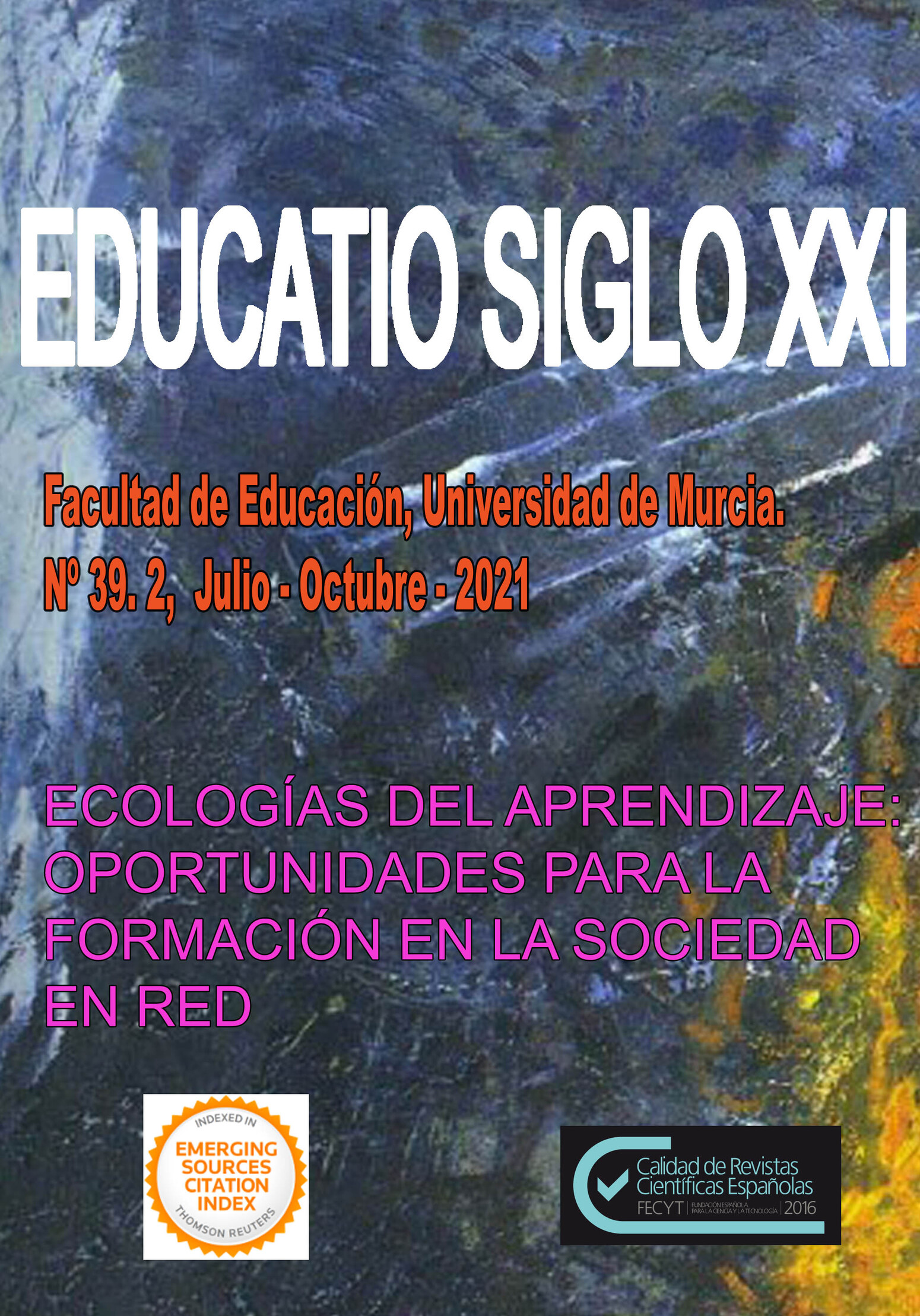Educational needs of Infant Education children with congenital heart disease. Description of a cohort and a systematic review
Abstract
Congenital Heart Disease (CHD) is one of the leading causes of mortality in Spain. This study aims (i) to identify the existence of (co)morbidities in the neurodevelopment of a sample of these children and (ii) to demonstrate the need for them to receive educational intervention as soon as possible through early care programs so that their maturational development can be optimized. This study also presents a systematic review of the research available in the field. With the Bayley-III Child Development Scale, cardiac infants ( = 25.3 months) at the University Hospital La Paz, at the Hospital 12 de Octubre and the Menudos Corazones Foundation were assessed. The biomedical and developmental characteristics of 90 participants are described. 68% have an average cognitive development. Average rates were also reported for linguistic (42%) and motor (44%) development. For the latter category, normal-slow (35% and 24%, respectively) and bordeline (15% and 12%) development rates were found. The review of the scientific literature in this regard corroborates that the communicative-linguistic and the motor areas are the poorest dimensions of development.
Downloads
-
Abstract1006
-
PDF (Español (España))717
References
Azcoaga, J.E. (1979). Aprendizaje fisiológico y aprendizaje pedagógico. Buenos Aires: Paidós.
Bellinger, D. C., & Newburguer, J.W. (2010). Neuropsychological, psychosocial, and quality-of-life outcomes in children and adolescents with congenital heart disease. Prog Pediatr Cardiol, 29(2), 87-92. https://doi.org/10.1016/j.ppedcard.2010.06.007
Bellinger, D.C., Wypij, D., duPlessis, A.J., Rappaport, L.A., Jonas, R.A., Wernovsky, G., & Newburguer, J.W. (2003). Neurodevelopmental status at eight years in children with dextro-transposition of the great arteries: the Boston Circulatory Arrest Trial. J Thorac Cardiovasc Surg, 126(5), 1385-96. https://doi.org/10.1016/s0022-5223(03)00711-6
Bishop, D. (2006). What causes specific language impairment in children? Current Directions in Psychological Science, 15 (5), 217–221. https://dx.doi.org/10.1111%2Fj.1467- 8721.2006.00439.x
Blair, C., & Razza, R.P. (2007). Relating effortful control, executive function, and false belief understanding to emerging match and literacy ability in kindegarten. Child Development, 78(2), 647-663. https://doi.org/10.1111/j.1467-8624.2007.01019.x
Calderon, J., Bonnet, D., Courtin, C., Concordet, S., Plumet, M., & Angeard, N. (2010). Executive function and theory of mind in school-aged children after neonatal corrective cardiac surgery for transposition of the great arteries. Dev Med Child Neurol, 52 (12), 1139-1144. https://doi.org/10.1111/j.1469-8749.2010.03735.x
Calderon, J., Angeard, N., Moutier, S., Plumet, M.H., Jambaqué, I., & Bonnet, D. (2012). Impact of prenatal diagnosis on neurocognitive outcomes in children with transposition of the great arteries. The Journal of Pediatrics, 161(1), 94-98. https://doi.org/10.1016/j.jpeds.2011.12.036
Cassidy, A.R., White, M.T., DeMaso, D.R., Newburguer, J.W., & Bellinger, D.C. (2014). Executive function in children and adolescents with critical cyanotic congenital heart disease. J Int Neuropsychol Soc, 21(1), 34-49. https://doi.org/10.1017/S1355617714001027
Chen, C., Harrison, T., & Heathcock, J. (2015). Infants with complex congenital heart diseases show por short-term memory in the mobile paradigm at 3 months of age. Infant Behavior and Development, 40, 12-19. http://dx.doi.org/10.1016/j.infbeh.2015.02.007
Comunidad de Madrid. (2018). Protocolo de Coordinación de Atención Temprana. Disponible en: http://www.madrid.org/bvirtual/BVCM014106.pdf
Creighton, D.E., Robertson, C.M., Sauve, R.S., Moddemann, D.M., Alton, G.Y., Nettel-Aguirre, A.,…Western Canadian Complex Pediatric Therapies Follow-up Group. (2007). Neurocognitive, functional and health outcomes at 5 years of age for children after complex cardiac surgery at 6 weeks of age or younger. Pediatrics,120 (3), e478-86. https://doi.org/10.1542/peds.2006-3250
Fundación Salud Infantil. (2019). Cardiopatías congénitas en el recién nacido. Disponible en: https://www.fundacionsaludinfantil.org/cardiopatias-congenitas-en-el-recien-nacido/
García, D. (2006). Causas de las cardiopatías. Factores de riesgo. Prevención. En J.Santos. (Ed.), Manual para padres de niños con cardiopatía congénita (pp.70-75). España: Ibáñez y Plaza.
Granberg, M., Rydberg, A., & Fisher, A.G. (2008). Activities in daily living and schoolwork task performance in children with complex congenital heart disease. Acta Paediatr, 97(9):1270-1274. https://doi.org/10.1111/j.1651-2227.2008.00880.x
Greco, R. (2016). Jornada de Cardiopatías Congénitas. Situación actual de la cirugía cardiaca de las principales cardiopatías. Madrid, España. Disponible en: http://original.livestream.com/grupocto/video?clipId=pla_cded1b26-a689-470b-bdd4-29f1f9024a3a&utm_source=lslibrary&utm_medium=ui-thumb
Gyoung, Y., Young, I. & Sook, J. (2018). Comparison of second and third editions of the Bayley Scales in Children with suspected developmental delay. Ann Rehabil Med, 42(2): 313-320. https://doi.org/10.5535/arm.2018.42.2.313
Hövels-Gürich, H.H., & McCusker, C. (2016). Neurodevelopmental Patterns in Congenital heart disease across childhood: Longitudinal Studies from Europe. En C. McCusker y F. Casey. (Ed.), Congenital Heart Disease and Neurodevelopment. Understanding and Improving Outcomes (pp. 41-54). UK: Elsevier. http//dx.doi.org/10.1016/B978-0-12-801640-4.00004-4
Hövels-Gürich, H.H., Konrad, K., Skorzenski, D., Minkenberg, R., Herpertz-Dahlmann, B., Messmer, B.J., & Seghaye, M.C. (2007). Long-term behavior and quality of life after corrective cardiac surgery in infancy for tetralogy of Fallot or ventricular septal defect. Pediatr Cardiol, 28(5), 346–354. https://doi.org/10.1007/s00246-006-0123-z
Hallioglu, O., Gurer, G., Bozlu, G., Karpuz, D., Makharoblidze, K., & Okuyaz, C. (2015). Evaluation of neurodevelopment using Bayley-III in children with cyanotic or hemodynamically impaired congenital heart disease. Congenit Heart Dis, 10(6), 537-541. https://doi.org/10.1111/chd.12269
Karsdorp, P.A., Everaerd, W., Kindt, M., & Mulder, B.J. (2007). Psychological and cognitive functioning in children and adolescents with congenital heart disease: a meta-analysis. J Pediatr Psychol, 32(5), 527–541. https://doi.org/10.1093/jpepsy/jsl047
LeRoy, S., Elixson, E.M., O`Brien, P., Tong, E., Turpin, S., Uzark, K.,… Council on Cardiovascular Diseases of the Young. (2003). Recommendations for preparing children and adolescents for invasive cardiac procedures: a statement from the American Heart Association Pediatric Nursing Subcommittee of the Council on Cardiovascular Diseases of the Young. Circulation,108(20), 2550-2564. https://doi.org/10.1161/01.CIR.0000100561.76609.64
Martín, I. (2006). Supervivencia actual. Secuelas. En J. Santos. (Ed.), Manual para padres de niños con cardiopatía congénita (pp.117-121). España: Ibáñez y Plaza.
Martínez-Biarge, M., Jowett, V.C., Cowan, F.M., & Wusthoff, C.J. (2013). Neurodevelopmental outcome in children with congenital heart disease. Seminars in Fetal & Neonatal Medicine,18(5), 279-285. https://doi.org/10.1016/j.siny.2013.04.006
Matsuzaki, T., Matsui, M., Ichida, F., Nakazawa, J., Hattori, A., Yoshikosi,K.,…Yagihara, T. (2010). Neurodevelopment in 1-year-old Japanese infants after congenital heart surgery. Pediatr Int, 52(3), 420-427. https://doi.org/10.1111/j.1442-200X.2009.02974.x
McCusker, C.G., Armstrong, M.P., Mullen, M., Doherty, N.N., & Casey, F.A. (2013). A sibling-controlled prospective study of outcomes at home and school in children with severe congenital heart disease. Cardiol Young, 23(4), 507–516. https://doi.org/10.1017/S1047951112001667
Medoff-Cooper, B., Iriving, S. Y., Hanlon, A. L., Golfenshtein, N., Radcliffe, J., Stallings, V.A., Marino, B.S., & Ravishankar, C. (2016). The Association among Feeding Mode, Growth, and Developmental Outcomes in Infants with Complex Congenital Heart Disease at 6 and 12 Months of Age. J Pediatr, 169, 154-159. https://doi.org/10.1016/j.jpeds.2015.10.017
Monfort, M., y Juárez, A. (2010). El niño que habla. El lenguaje oral en preescolar. Madrid: CEPE.
Niakoro. (2019). What is a congenital heart disease? Disponible en: https://www.niakoro.com/families/#definicion
Organización Mundial de la Salud (OMS). (2020). Anomalías congénitas. Disponible en: https://www.who.int/es/news-room/fact-sheets/detail/congenital-anomalies
Organización Mundial de la Salud (OMS). (2011). Clasificación Internacional del Funcionamiento de la Discapacidad y de la Salud. Versión para la Infancia y la Adolescencia (CIF-IA). Madrid: Ministerio de Sanidad, Política Social e Igualdad. Centro de Publicaciones
Pérez-Lescure, J., Mosquera, M., Latasa, P., y Crespo, D. (2018). Mortalidad de las cardiopatías congénitas en España durante 10 años (2003-2012). Anales de Pediatría, 88(5): 273-279. https://doi.org/10.1016/j.anpedi.2017.06.002
Pons, A., Fornieles, Y., Caballero, R., Campuzano, R., Conejero, J.A., Ferreras, M.J.,… Tapia, M. (2012). Tabla de equivalencies entre la Organización Diagnóstica de Atención Temprana (ODAT) y la Clasificación Internacional de Enfermedades (CIE) [Recurso electrónico]. Sevilla: Consejería de Salud
Real Decreto 46/2015, de 7 de mayo, por el que se regula la coordinación en la prestación de la atención temprana en la Comunidad de Madrid y se establece el procedimiento para determinar la necesidad de atención temprana. Boletín Oficial de la Comunidad de Madrid, 110, 11 de mayo de 2015, pp. 14-24.
Rollins, C.K., & Newburger, J.W. (2014). Neurodevelopmental outcomes in congenital heart disease. Circulation, 130: e124-e126. https://doi.org/10.1161/CIRCULATIONAHA.114.008556
Salamanca-Zarzuela, B., Morales-Luego, F., Alcalde-Martín, C., y Centeno-Malfaz, F. (2018). Desarrollo psicomotor en pacientes con cardiopatía congénita grave. Revista de Neurología, 66(12): 409-414. https://doi.org/10.33588/rn.6612.2017400
Sananes, R., Manlhiot, C., Kelly, E., Hornberger, L.K., Williams, W.G., MacGregor, D.,…McCrindle, B.W. (2012). Neurodevelopmental outcomes after open heart operations before 3 months of age. Ann Thorac Surg, 93(5), 1577-83. https://doi.org/10.1016/j.athoracsur.2012.02.011
Sociedad Española de Cardiología Pediátrica y Cardiopatías Congénitas (SECPCC). (2014). Manual para padres de niños con cardiopatía congénita. España: Ibáñez&Plaza
Snookes, S.H., Gunn, J.K., Eldridge, B.J., Donath, S.M., Hunt, R.W., Galea, M.P., & Shekerdemian, L. (2010). A systematic review of motor and cognitive outcomes after early surgery for congenital heart disease. Pediatrics,125(4), e818–e827. https://doi.org/10.1542/peds.2009-1959
Villagrá, F. (2019). Cardiopatías congénitas.net: ¿Qué son las cardiopatías congénitas? Madrid, España.: Unidad de Cardiopatías Congénitas. Disponible en: https://cardiopatiascongenitas.net/introcc/quesoncc/
Whitehurst, G. J., & Fischel, J. E. (1994). Practitioner review: Early developmental language delay: what, if anything, should the clinician do about it? J Child Psychol Psychiatry, 35(4), 613–648. https://doi.org/10.1111/j.1469-7610.1994.tb01210.x
Williams, I.A., Fifer, W.P., & Andrews, H. (2015). Fetal Growth and Neurodevelopmental Outcome in Congenital Heart Disease. Pediatr Cardiol, 36(6), 1135-1144. doi: 10.1007/s00246-015-1132-6
Xunta de Galicia. (s.f.). Protocolo de coordinación, intervención y derivación interinstitucional en atención temprana. Disponible en: https://escolasaude.sergas.es/Docs/EGSPC/pilula/Sociosanitarios/resources/protocolo_atencion_temprana.pdf
Copyright (c) 2021 Servicio de Publicaciones de la Universidad de Murcia

This work is licensed under a Creative Commons Attribution-NonCommercial-NoDerivatives 4.0 International License.
Original work publishes in this journal is subject to the following terms:
1. Murcia University Press (the publishing house) holds the copyright of the publishes work, and favours and allows their reutilization under the use license stated in point 2.
© Servicio de Publicaciones, Universidad de Murcia, 2015
2. Work is published in the electronic edition under a license (Creative Commons Reconocimiento-NoComercial-SinObraDerivada 4.0 España (legal text). They can be copied, used, disseminated, transmitted and publicly presented, as long as: i) authorship and original publication source is acknowledged (journal, publishing house and URL of the work); ii) are not used for commercial purposes; iii) the existence and specifications of this use license is stated.
3. Conditions for self-archive. Authors are allowed and encouraged to disseminate electronically the pre-pint (before review) and/or post-print (accepted for publication) versions of their work before their publication since that favours earlier circulation and dissemination resulting in an increased chance for the authors to be cited and for the work to reach a bigger share of the academic community. Colour: RoMEO: green.







